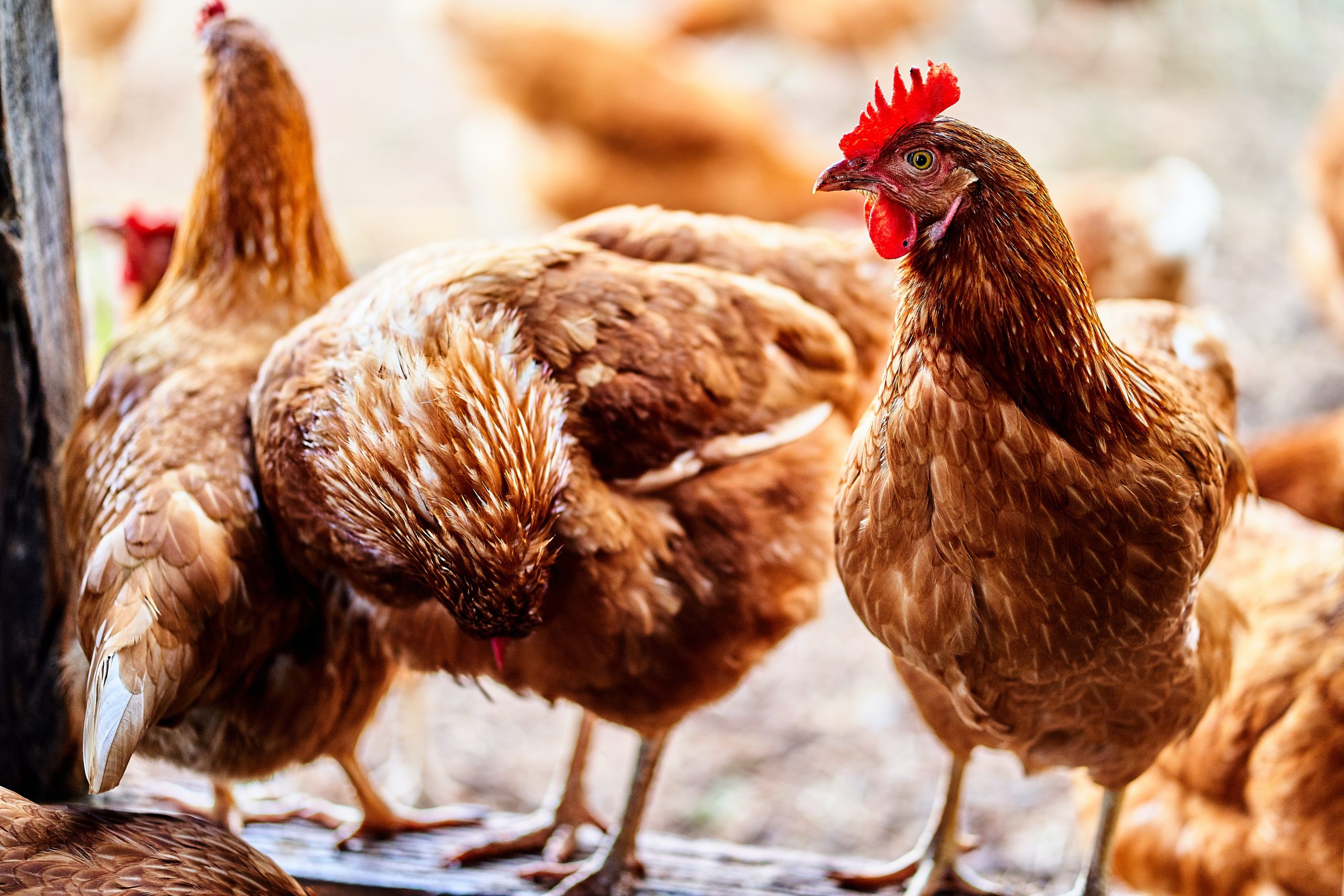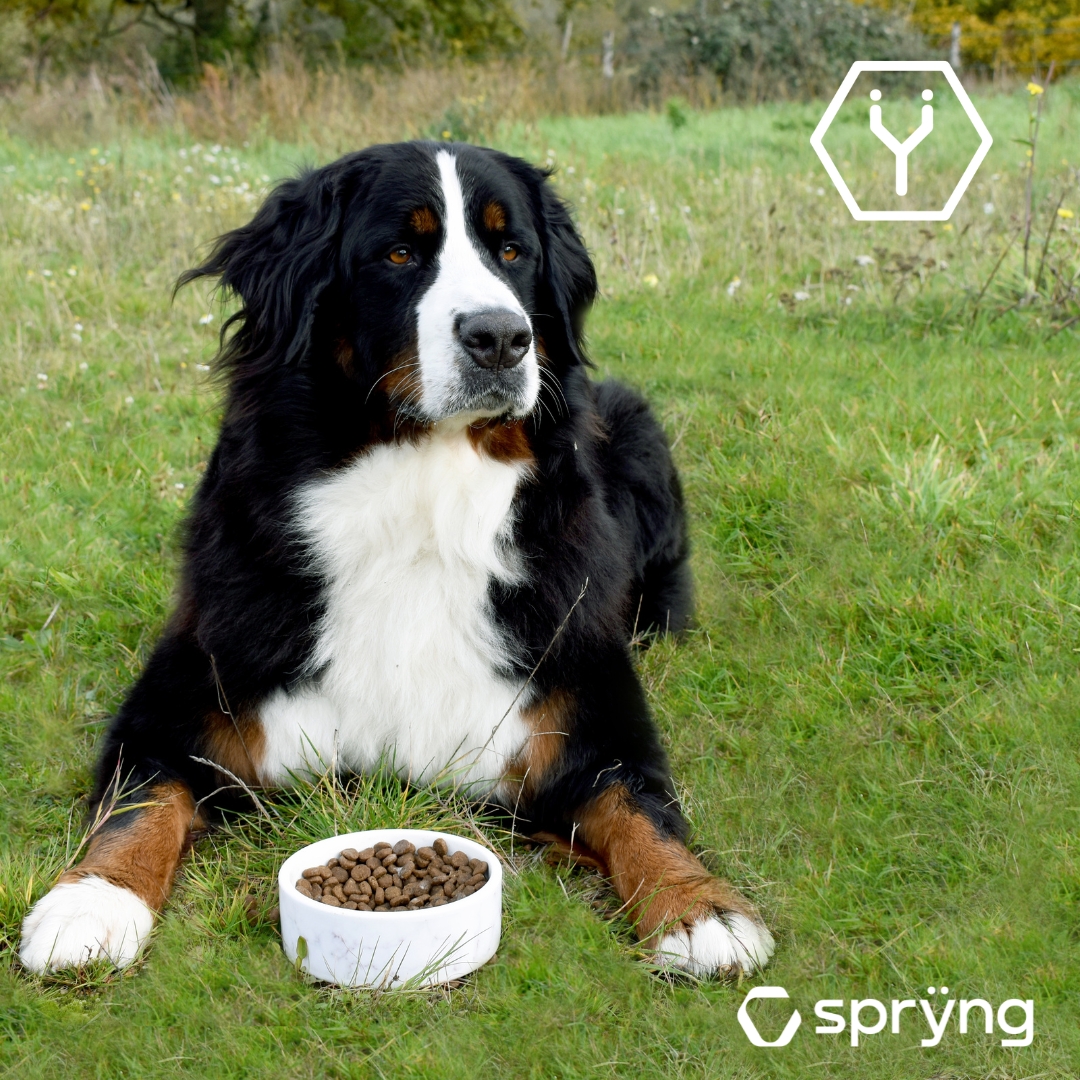In recent years, as dieticians and environmentalists alike have been advising us to reduce our consumption of red meat, the poultry industry has prospered. With an annual growth rate of 7%, it has become the fastest growing agricultural sub-sector, particularly in developing countries [1]. Chickens account for the majority of the sector: currently, 25 billion chickens are produced per year, of which 9 billion are broilers — destined for our dinner plates — with chicken meat representing more than 40% of total meat production globally.
Poultry feed: the current context
Feeding all these chickens is an industry in itself, and given that poultry feed accounts for 60–70% of the costs associated with poultry farming [2], there is a clear incentive to maximize efficiency. The more-than-40 nutrients required by the poultry are conventionally supplied in rations that include cereals (such as maize, wheat, barley), protein from animal or vegetable sources (such as fish-meal or soybean meal), and liquid feed fats (typically soybean oil, palm oil, rapeseed oil or sunflower oil), fortified with vitamins and minerals. However, alternative ingredients are constantly being sought, due to a combination of changing availability, soaring costs (e.g. soybean oil, fish meal), or questionable environmental credentials (e.g. palm oil) [3],[7].
Insect ingredients lead to improved digestibility and breast tissue
In this context, there is interest in evaluating the potential of insect oils and proteins as alternative ingredients: insect farming is a rapidly growing sector that is not associated with adverse environmental effects. Hence, some recent studies have investigated mealworm oil as an alternative to either palm oil or soybean oil, with promising results [5],[10]. Any potential new ingredient is evaluated on the basis of key parameters including palatability, nutrient digestibility, growth performance of the birds, and the nutritional quality of the meat. Replacement of soybean oil with mealworm oil did not adversely affect any of these key parameters; on the contrary, nutrient digestibility was improved.
Furthermore, the meat quality of the breast tissue was positively affected: its fatty acid profile was lower in saturated fats and higher in key unsaturated fatty acids. This may be related to the fatty acid profile of the oil itself: mealworm oil contains a high proportion of unsaturated fatty acids — particularly oleic and linoleic acids[5] — which is important for poultry feed as the birds utilize unsaturated fatty acids more efficiently than saturated ones, especially at a young age[4]. In the studies where palm oil was replaced with mealworm oil, improved fatty acid profiles were observed in both breast muscle and liver tissue: the liver contained less fat overall, with a higher proportion of unsaturated fatty acids; while in the breast tissue, the fatty acid profile favored polyunsaturated fatty acids. So in terms of meat quality, the inclusion of insect oil in poultry feed would appear to be a plus.
Concerns around antibiotics in poultry feed
An important concern in the preparation of poultry feed relates to the use, and abuse, of antibiotics[12]. Antibiotics are administered in poultry feed for two main reasons: to control the spread of avian diseases; and to promote growth of the birds, so that each bird produces more meat and hence generates greater profits. The former reason has important consequences for humans, as several bacteria that infect poultry can cause human illness when the meat is consumed — notably, Campylobacter, E. coli and Salmonella. Unfortunately, the latter reason has led to antibiotics being over-administered, with a consequent development of antibacterial resistance, rendering them less effective for their intended purpose. This represents a threat to human health — both through increased chance of disease transmission, and potential for antibiotic resistance genes to be transmitted from animals to humans[14] — and hence there is an incentive to identify good alternatives to antibiotics for maintaining poultry health.
Probiotics and prebiotics from insects
Here, too, it appears that insect ingredients may have a part to play in the solution. A recent study investigated the efficacy of a probiotic made from insects — specifically, from fermented mealworm larvae[9] — in protecting broiler chicks from bacterial infection. (Probiotics are “good” bacteria, introduced into the gut to improve immunity of the gastrointestinal tract11.) Chicks were injected with E. coli and Salmonella, then fed a diet containing either the mealworm probiotic or a control diet without the probiotic. After eight days, the chicks fed the probiotic displayed significantly lower mortality, lower levels of E. coli and Salmonella microflora in the cecum, and an improved immunological response, all of which suggest that the mealworm probiotic is a good alternative to antibiotics. Interestingly, a different study in which broiler chicks were fed a diet including mealworm protein that had not been fermented, also reported a reduced cecal E. coli content[13]. This suggests that there is something in the insect protein itself that has a prebiotic effect, improving the immune response of broilers. This effect is likely to be mediated by chitin, a polymer found in the exoskeleton of insects: chitin and its derivative chitosan have been shown elsewhere to have not only antimicrobial effects, but also antifungal and antiviral effects, mediated (at least in part) by improving intestinal microflora through increased levels of Lactobacillus[11].
Positive effect on feed conversion ratio
Of course, the bottom line for many poultry farmers is the bottom dollar. In this respect, they may be more interested in looking at the feed conversion ratio (FCR) — a measure of the efficiency with which feed is converted to meat, with lower values indicating greater efficiency — than gut microflora. But here, too, insect ingredients appear to perform well: both of the afore-mentioned studies that investigated cecal E. coli levels also measured FCR, and observed it to be lower when mealworm meal (or mealworm probiotic) was included in the feed. FCR is just one measure of growth performance: others include final body weight and average daily weight gain. Not every study has reported improvement in all these growth measures at every stage of development of the birds; nevertheless, the consensus appears to be that for insect inclusion levels of up to around 10%, there is improvement in at least one of the growth performance measures, with no negative impact on any of the others [6],[8].
So, while there is more work to be done in clarifying the optimal inclusion level for any given situation, poultry farmers can be confident that including insect protein in their birds’ diet will have a positive effect on growth; and when taken in the context of the benefits for meat quality and pathogen management, it is clear that there are many good reasons to opt for insect products as ingredients in poultry feed.
References
1. http://Feedandadditive.com/global-poultry-industry-and-trends
2.https://agritech.tnau.ac.in/animal_husbandry/ani_chik_conventional.html
3. https://www.spglobal.com/commodityinsights/en/market-insights/latest-news/agriculture/042922-latam-soybean-oil-prices-skyrocket-above-historical-1900mt
4. https://www.wattagnet.com/articles/25626-poultry-feeds-and-the-role-of-liquid-fats
5. Benzeriha et al. (2019). Animals 9: 116. doi:10.3390/ani9030116
6. Elahi et al. (2020). Animals (Basel) 10(2): 224. Doi.org/10.3390/ani10020224.
7. Hardy & Tacon (2002). Responsible marine aquaculture. doi.org/10.1079/9780851996042.0311
8. Hong et al. (2020). Animals 10: 2068. doi.org/10.3390/ani10112068
9. Islam & Yang (2017). Poultry Science 96: 27. doi.org/10.3382/ps/pew220
10. Kieronczyk et al. (2018). Animal Feed Science and Technology 240: 170. doi.org/10.1016/j.anifeedsci.2018.04.002
11. Krysiak et al. (2021). Animals 11: 1620. doi.org/10.3390/ani11061620
12. Mehdi et al. (2018). Animal Nutrition 4(2): 170. doi.org/10.1016/j.aninu.2018.03.002
13. Sedgh-Gooya et al. (2020). Journal of Animal Physiology and Animal Nutrition 105(1): 119. doi.org/10.1111/jpn.13434
14. Soucy et al. (2015). Nature Reviews Genetics 16: 472. doi.org/10.1038/nrg3962





